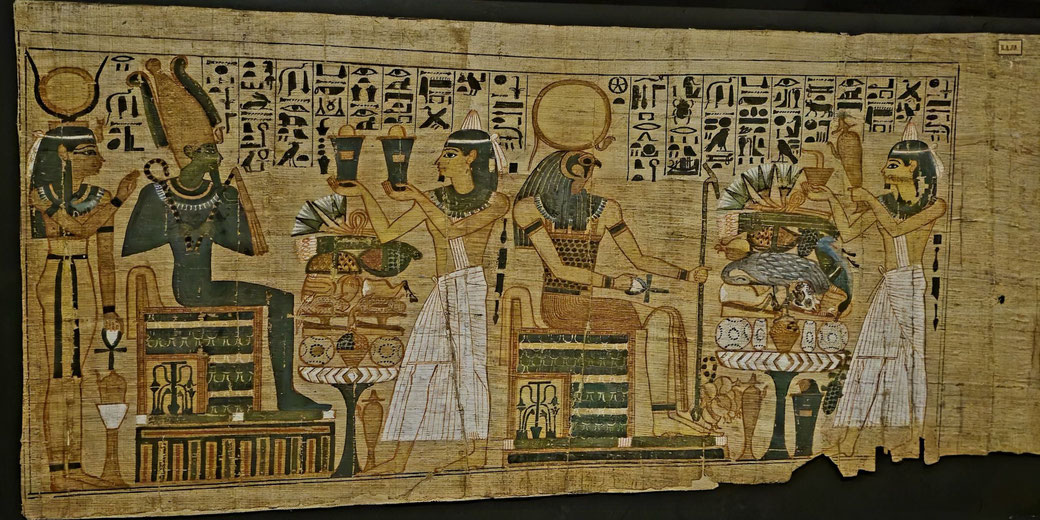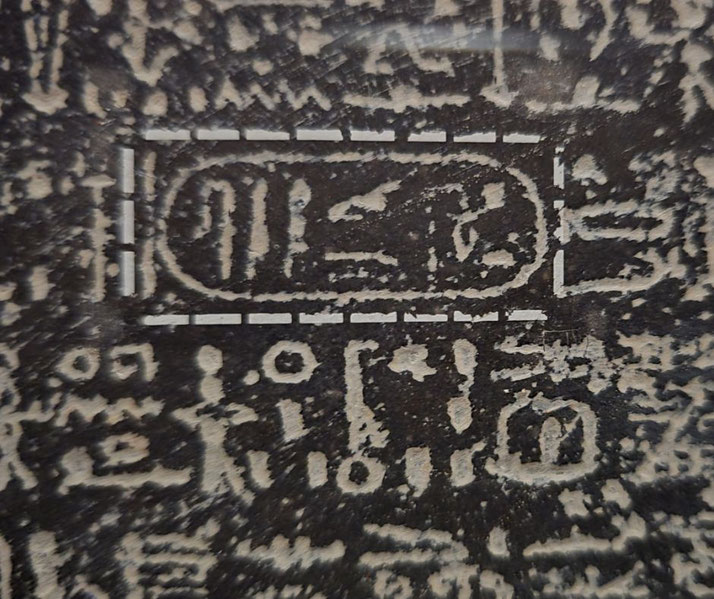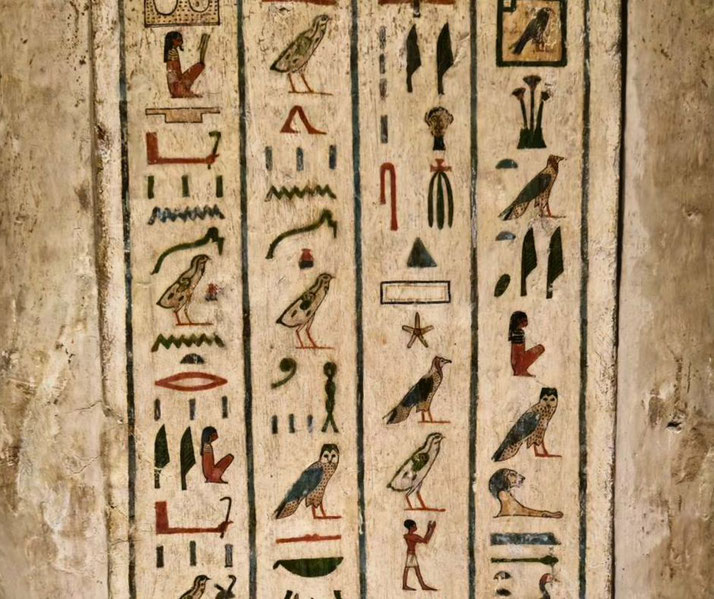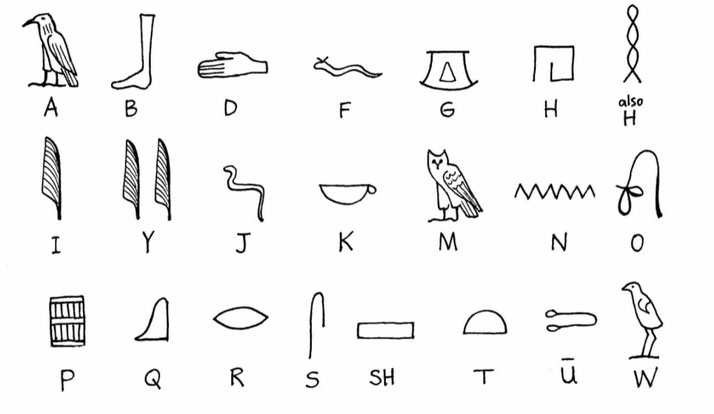What are hieroglyphs and how do you read them?

People first created writing systems around 3000 BC and one of the most well-known early writing system was created in ancient Egypt called hieroglyphs.
The word comes from two Greek words: hiero (meaning ‘holy’) and glyph (meaning ‘carving’). So hieroglyph means ‘holy carving’.
It was called this because hieroglyphs was thought to hold some kind of magical quality when it was used.
However, on a basic level, hieroglyphs used small pictures of things in nature to represent sounds.
This writing system could be used to write messages on statues, tombs and temple walls throughout Egypt.
However, for most of our modern history, people did not know how to translate or understand this ancient writing.
In fact, only a special group of people in ancient Egypt was taught how to read and write hieroglyphs. These people were known as ‘scribes’.
Scribes learned each symbol from a young age and their skills made them very wealthy and influential in ancient Egypt.
How hieroglyphs work
Hieroglyphs worked in a way similar to our writing. But unlike English, it had more than 700 symbols, and each symbol represented a sound or a group of sounds.
Each symbol was a small picture of something from the world around us, such as an animal, a plant, or a object.
The Egyptians knew the name of each symbol and took the first sound of that name as the sound for the picture.
For example, the Egyptian word for ‘mouth’ began with the ‘r’ sound, so the picture of a mouth was used to write ‘r’.
In other cases, some hieroglyphs represented a whole syllable, such as ‘ra’ or ‘in’.
That arrangement allowed them to use one symbol for a combined sound rather than use a separate symbol for each sound.
For instance, the word ‘bark’ could be written with one symbol for the ‘b’ sound and another symbol for the ‘ark’ sound.
That choice meant they needed only two pictures instead of four letters like in English.
Some symbols did not make a sound. Instead, they appeared at the end of words to show which meaning of the word was meant.
That rule helped to clarify two different words that sounded alike.
For example, in English, the word ‘bark’ can mean the sound made by a dog or the outside of a tree.
In hieroglyphs, the scribe wrote the signs for ‘bark’ and then added a picture of a dog or a tree at the end of the word, so the reader knew which meaning it had.
How to read hieroglyphs
Hieroglyphs were flexible and could be carved onto different surfaces. Most often, scribes carved them into the rock walls of temples and tombs.
Since rock often had an uneven surface or odd shapes, scribes culd change the layout to make the symbols fit.
Because of that, scribes could carve hieroglyphs in any direction: left to right, right to left, top to bottom, or bottom to top.
Infact, sometimes, the same surface had writing going in different directions in the same inscription.
So, to avoid confusion about which direction an inscription should be read from, scribes made sure all the animal and human figures in a line pointed toward the start of the line.
This rule told the reader which way to move through the text.
The Egyptians also had a rule for writing the names of very important people, such as gods and pharaohs.
In those cases, they drew an oval shape around the signs of the name, which represented a sacred rope.
That oval shape and the name inside it was called a ‘cartouche’.

Other Egyptian writings systems
The ancient Egyptians valued hieroglyphs greatly. Because carving them into rock took so much time, they used hieroglyphs only for official messages from pharaohs or for religious texts.
For everyday notes and letters, hieroglyphs were too time-consuming and too sacred.
So, Egyptians developed two simpler writing systems for normal tasks. Those systems were called hieratic and demotic.
Both systems began with the same shapes as the hieroglyphs, but scribes then made them much simpler so they could write them faster.
Over time, those signs lost any resemblance to the original pictures and eventually looked like simple lines and marks.
People who learned to write used these two faster systems. Only priests and scribes kept the skill to read original hieroglyphs.

Decoding the hieroglyphs
After the Romans took control of Egypt, people wrote more in Greek and Latin than in Egyptian scripts.
By the 4th century AD, writers stopped using hieroglyphs all together, and people soon forgot how to read them.
For more than 1500 years, people kept trying to discover what the pictures meant, but the meaning remained a mystery.
That changed when Napoleon Bonaparte invaded Egypt in 1799, and he found a large stone inscription known as the ‘Rosetta Stone’.
It contained the same message in three writing systems: hieroglyphs, demotic and ancient Greek.
Because scholars already knew how to read ancient Greek, they could use it to decode the hieroglyphs.
Over the next twenty years, several scholars tried to translate the Rosetta Stone.
Finally, French scholar Jean François Champollion read texts that had been written thousands of years earlier.
Thanks to his work, and that of hundreds of other Egyptologists since, we can now read almost all ancient hieroglyphic inscriptions.
What do you need help with?
Download ready-to-use digital learning resources
Copyright © History Skills 2014-2025.
Contact via email
With the exception of links to external sites, some historical sources and extracts from specific publications, all content on this website is copyrighted by History Skills. This content may not be copied, republished or redistributed without written permission from the website creator. Please use the Contact page to obtain relevant permission.






